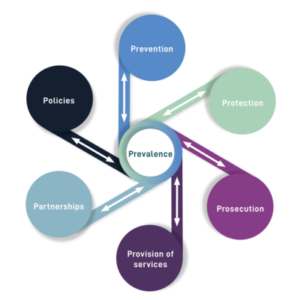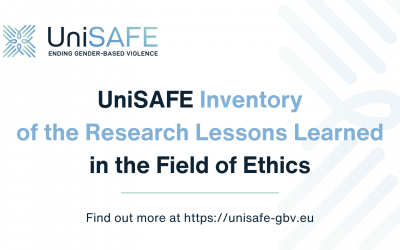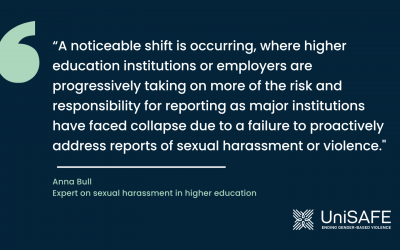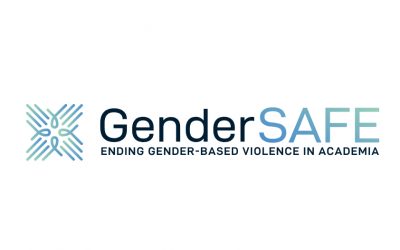Operationalising gender-based violence: introducing the 7P model
To produce solid and comprehensive knowledge on gender-based violence, UniSAFE has developed an innovative conceptual framework to investigate the mechanisms, social determinants, antecedents and consequences of gender-based violence in universities and research organisations.
The 7P model will inform the collection and analysis of data to understand prevalence and evaluate the efficiency of interventions and institutional responses to gender-based violence.
A truly holistic approach
At the core of the 7P model is the measurement of prevalence of gender-based violence in universities and research organisations. During the three years, UniSAFE will collect and analyse qualitative and quantitative data to understand how prevalence responds to the other Ps of the model, reflecting the role of universities and research organisations in different areas. In particular, these areas will be:
– Prevention, including all the measures and activities implemented to promote change in behaviour and attitudes. These can be awareness-raising initiatives, educational resources, targeted policies and dedicated training of professionals in universities and research organisations.
– Protection, including all the cooperative actions aimed at ensuring the safety and meeting the needs of potential victims. The establishment of transparent reporting processes and provision of adequate infrastructure for reporting and supporting the victim are some examples.
– Prosecution, referring to the disciplinary measures and the legal procedures against suspected perpetrators, and the specific training of those responsible for implementing the measures.
– Provision of services offered to victims of gender-based violence, their families, and perpetrators, and their dissemination among all the staff and student body. In research organisations, these services can overlap with prevention and protection: some examples can be counselling services, restraining measures for perpetrators and the reorganisation of hierarchies.
– Partnerships, referring to the involvement of relevant actors at various levels, including governmental agencies, civil society organisations, trade unions, and staff and students associations. These actors might work in collaboration to eradicate gender-based violence, for instance by contributing to the development of specific university procedures or by fostering police and criminal justice cooperation with organisations providing expertise on gender-based violence.
– Policies, the more comprehensive strategies that respond to the issue of gender-based violence in a structured way. Analysing policies will also enable us to capture the dominant discourse framing gender policies.

The 7P model explains how the prevalence of gender-based violence responds to the other variables
A better-equipped model to capture the prevalence of gender-based violence
By studying how prevalence relates to the other six variables of the model, the 7P model marks a significant innovation to research on gender-based violence. This model extends the conventional approach adopted by the United Nations, which focuses on the 3P: prevention, protection and prosecution. In addition to that, it further expands the 4P approach taken by the Council of Europe in the Istanbul Convention, which includes ‘policies’ as an additional variable.
By expanding its analysis and investigating the role of research organisations in providing services to the victims and perpetrators, and how they are supported by partnerships with relevant actors at the international, national and local level, the 7P model adopted by UniSAFE provides a truly holistic understanding of gender-based violence in higher education, and makes UniSAFE better equipped to provide robust knowledge and translate it into operational tools.



